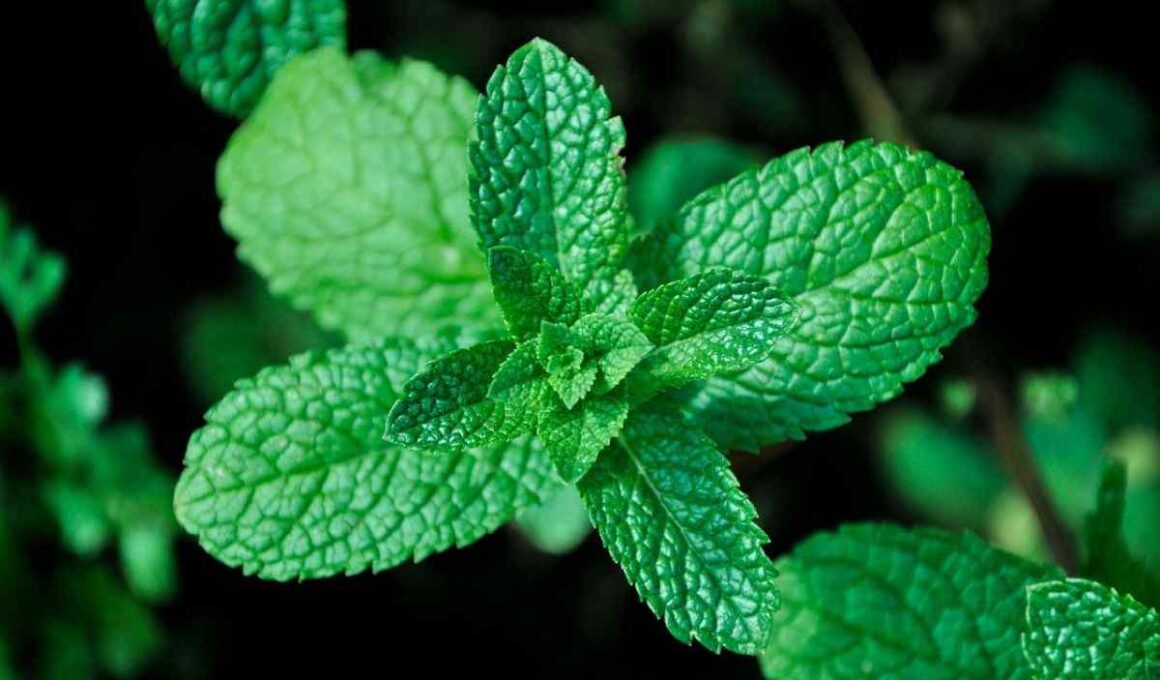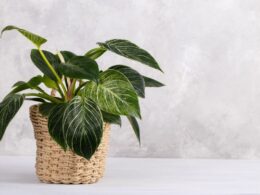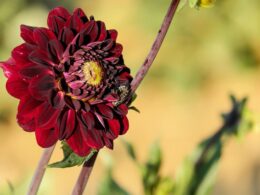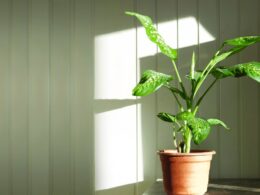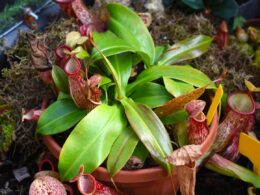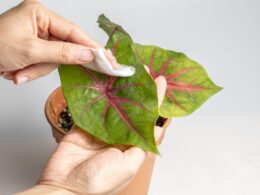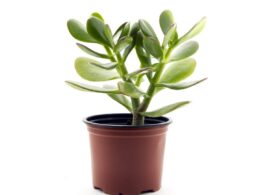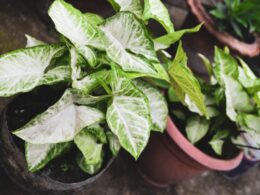Types of Mint Plants: Spearmint, Peppermint and More
Before we get into how to grow mint indoors, let’s discuss your options. The most common type of mint is spearmint (Mentha spicata), but some other mints valued for their aroma are:
- peppermint (Mentha × piperita);
- apple mint (Mentha sauveolens);
- pineapple mint (Mentha sauveolens ‘Variegata’);
- chocolate mint (Mentha × piperita f. citrata).
If you’re not sure which type of mint you want to grow, ask your local nursery or gardening store for advice. They may let you smell the different types of mint, so you can choose the one with the scent you like best.
One thing to note is that if you’re growing different varieties of mint indoors or outside, you’ll need to keep them far away from each other. If you allow the different varieties to cross-pollinate, they’ll create hybrids which may not smell or taste as good as the parent plants.
How to Grow Mint Indoors – Planting Mint in a Pot
If you’re curious how to grow mint indoors in pots, the first step is to choose a pot that’s at least 12 inches wide and 12 inches deep. Mint roots grow quickly and spread outwards, so you’ll need a pot with plenty of room for the plant to grow.
You can start mint from seeds or buy a young plant from a nursery. If you’re starting from seeds, sow them indoors in late winter or early spring. Plant the seeds ¼ inch deep in seed-starting mix and keep the soil moist. It can take up to two weeks for the mint seeds to germinate.
Once your mint plants have grown to be about four inches tall, you can transplant them into their final pots. Be sure to space the plants about 18 inches apart, as they will spread outwards as they grow.
The Best Potting Soil for Mint Plants
When it comes to potting mix, you’ll want to choose something that’s light and airy. A good option is a mix of two parts perlite or coarse sand (for better drainage) and one part peat moss. You can also add some compost to the mix for extra nutrients.
How to Care for Your Potted Mint Plants
Water your mint plants regularly, keeping the soil moist but not soggy. You may need to water them more often in hot, dry weather. In the winter, reduce watering somewhat but don’t let the soil dry out completely.
Mint thrives in full sun or indirect light, so it’s a good plant to grow indoors on a windowsill. Place the pot in a spot where it will get at least 6 hours of direct sunlight per day. If you don’t have a sunny spot indoors, you can grow mint under fluorescent lights.
Fertilizer won’t be necessary if the soil is already rich in organic matter. Mint is a hardy perennial plant that can tolerate a wide range of soil conditions.
How to Grow Mint in Water From Cuttings
If you want to know how to grow mint indoors in water, the best way to do it is by taking cuttings from an existing plant. Look for a healthy stem with leaves and cut it off just below a leaf node (the point where the leaves join the stem). The cutting should be 5-6 inches long in total and have at least 2 nodes, one of which will be submerged.
Remove the bottom leaves from the cutting, so you’re left with about 2 inches of bare stem. Place the stem in a net cup (or another container with holes at the bottom), then put that cup in a jar, bottle or glass of water. Place your mint in a spot that gets at least 6 hours of sunlight per day.
Change the water every 3-4 days to keep it fresh. You can also add a water-soluble fertilizer if you don’t want to change the water that frequently. Within a week, you should see roots growing from the base of the cutting. 1-2 weeks later, leaves will begin to grow as well.
Once your mint has rooted and is growing new leaves, you can transplant it into a pot of soil or leave it where it is – it’s up to you! Your plant will be ready for the first harvest in about 25 days.
Harvesting Indoor Mint
You can start harvesting mint leaves once the plant has reached a height of about six inches. Cut off the top two inches of growth, being careful not to damage the stem or leaves. You can use fresher mint leaves for teas, salads and other dishes, while older leaves are better for drying or freezing.
Storing Your Mint to Keep It Fragrant Year-Round
Mint leaves can be stored in the fridge for up to a week, or frozen for up to six months. If you’re drying mint, hang the stems upside down in a dark, dry place until the leaves are crumbly. Once they’re dry, store the mint leaves in an airtight container.
You can also make mint extract by steeping fresh or dried mint leaves in vodka for two weeks. Strain out the leaves and store the mint-infused vodka in a dark glass bottle. Mint oil can be used to flavor candy, desserts and other dishes.
Mint Care Is Easy – Enjoy the Herb Season After Season
Now that you know how to grow mint indoors, you can enjoy this versatile herb year-round! Whether you’re using it to make tea, add flavor to your cooking or simply enjoy its refreshing scent, mint is one great plant to have around the house, and it’s easy to grow.
Do you have any tips for growing mint indoors? Share them in the comments below!





